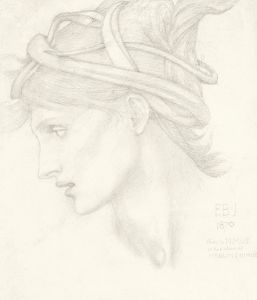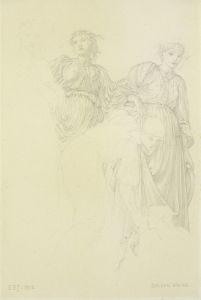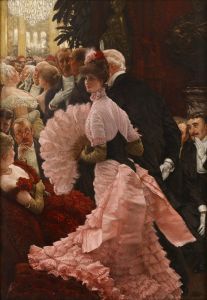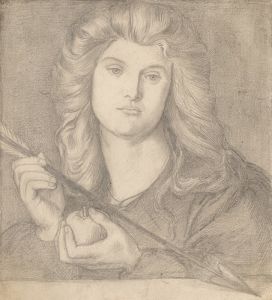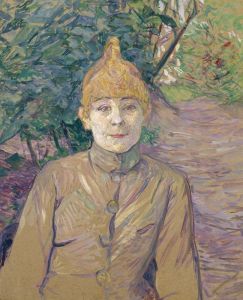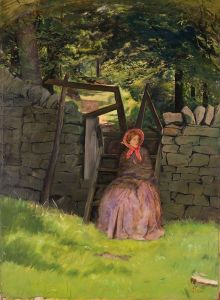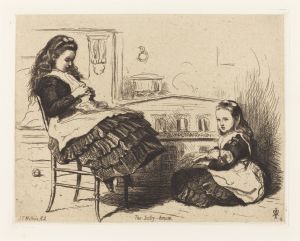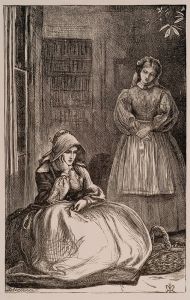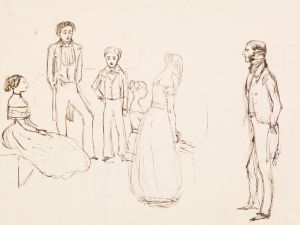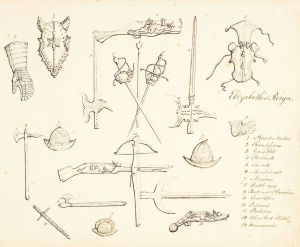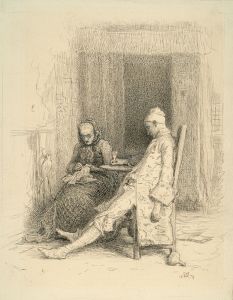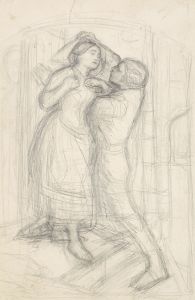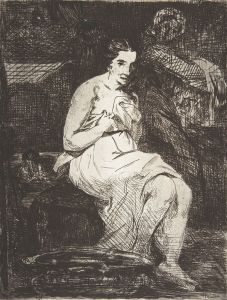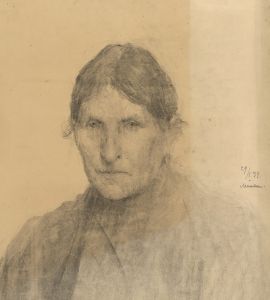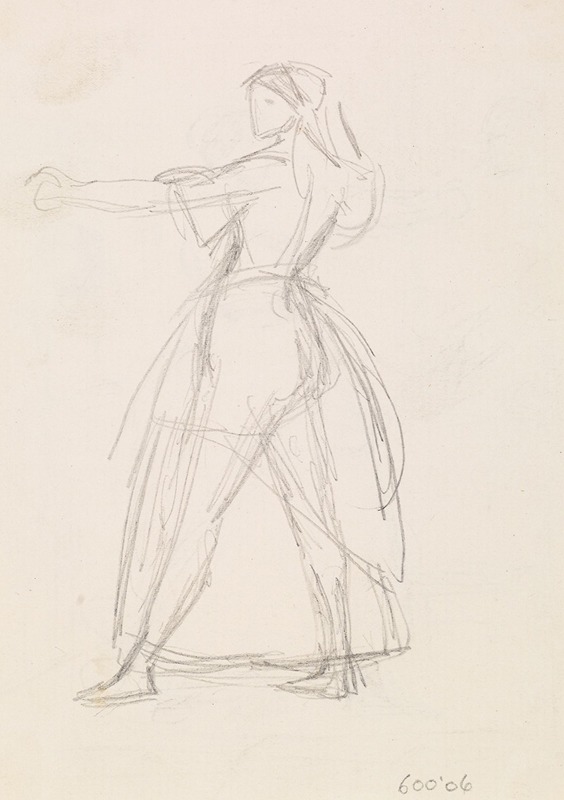
Female – Study of a Woman in a threatening Attitude, Arm raised
A hand-painted replica of Sir John Everett Millais’s masterpiece Female – Study of a Woman in a threatening Attitude, Arm raised, meticulously crafted by professional artists to capture the true essence of the original. Each piece is created with museum-quality canvas and rare mineral pigments, carefully painted by experienced artists with delicate brushstrokes and rich, layered colors to perfectly recreate the texture of the original artwork. Unlike machine-printed reproductions, this hand-painted version brings the painting to life, infused with the artist’s emotions and skill in every stroke. Whether for personal collection or home decoration, it instantly elevates the artistic atmosphere of any space.
"Female – Study of a Woman in a threatening Attitude, Arm raised" is a drawing by Sir John Everett Millais, a prominent British painter and illustrator who was one of the founding members of the Pre-Raphaelite Brotherhood. This artistic movement, established in 1848, sought to return to the detail, intense colors, and complex compositions of Quattrocento Italian art.
Millais was born in Southampton, England, in 1829 and showed remarkable artistic talent from a young age. He entered the Royal Academy Schools at the age of eleven, becoming the youngest student to do so. His early works were heavily influenced by the Pre-Raphaelite principles, which emphasized realism, attention to detail, and vibrant colors.
The drawing "Female – Study of a Woman in a threatening Attitude, Arm raised" is a study piece, which means it was likely created as a preparatory work for a larger painting or as an exercise in capturing human movement and emotion. The drawing depicts a woman in a dynamic pose, with her arm raised in a threatening manner. This kind of study would have been essential for Millais to perfect the anatomy and expression of his subjects before committing them to a final composition.
Millais was known for his meticulous approach to art, often spending extensive periods working on preliminary sketches and studies. This practice allowed him to achieve a high level of detail and accuracy in his final works. The drawing in question showcases his skill in capturing the human form and conveying a sense of movement and emotion.
Throughout his career, Millais produced a wide range of works, including portraits, landscapes, and genre scenes. Some of his most famous paintings include "Ophelia" (1851-1852), "The Order of Release" (1853), and "The Blind Girl" (1856). His work was highly regarded for its technical proficiency and emotional depth.
In addition to his contributions to the Pre-Raphaelite Brotherhood, Millais also had a successful career as an illustrator. He provided illustrations for several literary works, including those by authors such as Alfred Lord Tennyson and Anthony Trollope. His illustrations were praised for their ability to complement and enhance the narratives they accompanied.
Millais's later career saw a shift in his style, moving away from the strict Pre-Raphaelite principles towards a more broadly appealing and commercially successful approach. He was elected as a full member of the Royal Academy in 1863 and later served as its president from 1896 until his death in 1896.
"Female – Study of a Woman in a threatening Attitude, Arm raised" exemplifies Millais's dedication to the study of human anatomy and expression. While it may not be as widely recognized as some of his finished paintings, it provides valuable insight into his artistic process and the level of preparation that went into his work. This drawing, like many of Millais's studies, highlights his commitment to capturing the intricacies of human emotion and movement, which are hallmarks of his enduring legacy in the art world.





